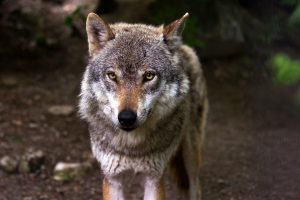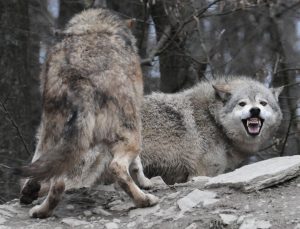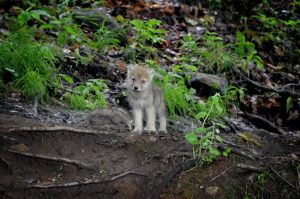The Iconic Gray Wolf
Written by Nature Canada’s writing intern, Gabriel Planas

Nature Canada’s featured species for May is the Gray Wolf.
Latin Name: Canis Lupus
Life Span: 6-8 years
Description:
Also known as, timber or western wolves, Gray Wolves, are one of the most iconic and mythologized animals on planet earth. Known for their beautiful gray and sometimes golden brown coats, these wolves can be found in a variety of environments and continents, from Asia to Europe and North America. This notoriety almost lead to their extinction in the southern United States due to the popularity of their pelts and their tendency to hunt animals that humans have domesticated.
Sometimes weighing up to 120 pounds and measuring almost six feet in length, these apex predators would be a frightening sight to stumble across in the wild. Despite their intimidating size and the 1500 pounds per square inch of pressure provided by their jaws, Gray Wolves hunt in packs to take down their prey.
Hunting:

Their preferred prey, ungulates (Deer, elk, moose, caribou, bison), are experts in evading wolves. 84-87 out of 100 of prey escape while being hunted, meaning that a pack of wolves may not eat for days. For this reason, Wolves will often eat 20% of their own body weight. When wolves do kill their prey, they will often be the young, the old or the sick of the herd they are hunting.
Wolves live in packs of 2 to 20, depending on the amount of prey available within their territory. This territory is marked by all manner of bodily functions (urine mostly) and is protected against other packs.
Packs follow a strict hierarchical structure with an alpha male at the top, while their mate acts as their second. This pair is often the only wolves to mate in a pack with the other wolves helping to take care of the offspring.
Puppies!
 Wolf pups are born completely blind and deaf; however, they possess a well-developed sense of smell. Litters are typically about 4-6 pups which take up to 63 days to grow inside the womb with an additional 12 to 15 days to open their eyes. These pups are not like any puppies you would see in the dog park as they begin hunting with the rest of the pack after only 7-8 months.
Wolf pups are born completely blind and deaf; however, they possess a well-developed sense of smell. Litters are typically about 4-6 pups which take up to 63 days to grow inside the womb with an additional 12 to 15 days to open their eyes. These pups are not like any puppies you would see in the dog park as they begin hunting with the rest of the pack after only 7-8 months.
Before this however, pups are fed milk until 4-5 weeks after which meat is provided by all members of the pack. When pups are hungry at this age, they will lick around the mouth of another wolf, which prompts the wolf to regurgitate food stored in their stomach. This provides a sort of “baby food” for wolves.



